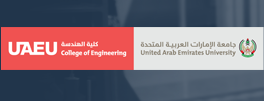Abstract
Food wastes are known as one of the big concerns in urban management because of grain consumption gain, environmental pollution, and traditional waste management methods. The reuse of restaurant waste can reduce the cost of producing animal food production. This study attempts to find related parameters to use in the development of an automatic recycling machine and also a suitable method for food waste management (wastes of restaurants in universities and other academic environments) to use in various animal diets. Determination of various parameters including the percentage of dry matter (using a dryer), protein (using Kjeldahl test), fat (using Soxhlet extractor), and energy (using Calorimeter bomb test) were done in this research. Relevant parameters were also extracted from common diets used in livestock and poultry feed and then compared with the parameters obtained from the wastes. The results showed the average value of dry matter in different diets by 82.89% is three times more than this parameter in extracted food by 29.42%. The protein percentage, fat percentage, and energy value in extracted food (25.59%, 13.26%, and 4.41 cal/Kg, respectively) is sufficient to use in different diets. The average value of the protein percentage, fat percentage, and energy value in different diets is 23.75%, 4.27%, and 3.50 cal/Kg, respectively. The archived results indicated that it is possible to use processed food waste in livestock and poultry diets and these substances can be a good alternative to some of the diets. The output of this research will use in developing a sustainable waste material recycling system. Finally, the extracted parameters are used in designing a recycling system.
Recommended Citation
Roshanianfard, Ali; Nematzadeh, Samira; and Mesri-Gundoshmian, Tarahom
(2021)
"Parameterization of Food Wastes to Develop an Automatic Recycling System for Livestock and Poultry Feed,"
Emirates Journal for Engineering Research: Vol. 26:
Iss.
4, Article 2.
Available at:
https://scholarworks.uaeu.ac.ae/ejer/vol26/iss4/2
Included in
Animal Sciences Commons, Apiculture Commons, Food Processing Commons

